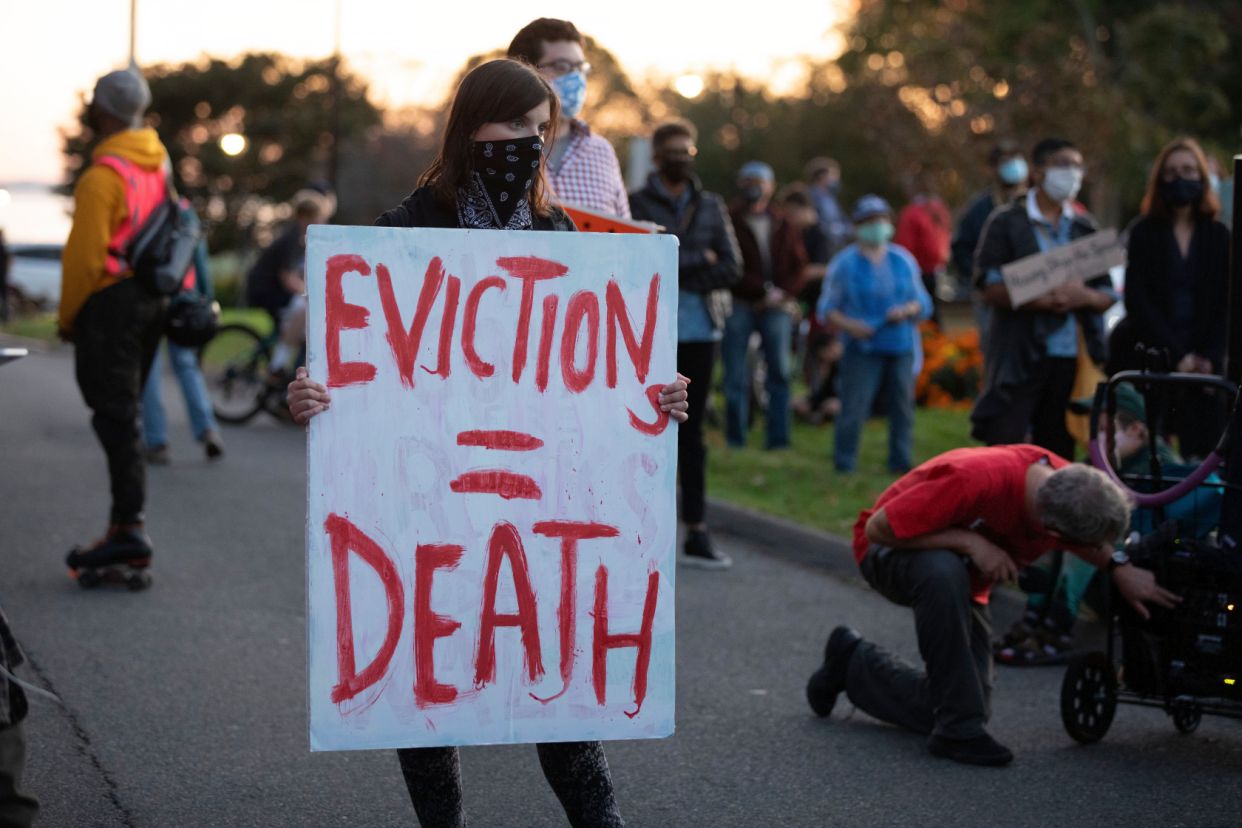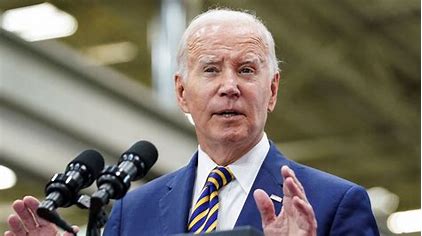|
Getting your Trinity Audio player ready...
|
Housing – December 15, 2020
TrueNewsBlog- TNB
From Politico-
Evictions could put more at risk for contracting COVID-19 by forcing people to move into cramped quarters — or out on the street.
As Covid-19 continues to wreak havoc on the nation, it is exacerbating long-existing racial disparities in housing — and those disparities mean that ultimately, even more people could get sick.
The expiration of the federal eviction ban at the end of the month will disproportionately hurt Black and Latino tenants, financially hobbling them for years and ensuring that the United States’ staggering racial wealth gap won’t narrow anytime soon.
Black and Latino people are twice as likely to rent as white people, so a wave of evictions would hit them hardest, adding to the unequal toll of a pandemic that is already ravaging the health and finances of minority communities.
“The majority of the up to 17 million households at risk of losing their homes this winter are comprised of people of color,” said Diane Yentel, president and CEO of the National Low Income Housing Coalition.
“While the current crises have heightened the threat of eviction for Black and Latino renters, it is not new,” Yentel added.
“Structural racism leaves people of color disproportionately low-income, rent-burdened, or homeless. These inequities compound the harm done by Covid-19.”
Just as communities of color have seen higher infection and death rates from the virus, they have also been more vulnerable to job and income losses from the ensuing economic crisis, in large part because Black and Latino workers are over-represented in the service industries wiped out by shutdowns.
The pandemic has caused “the most lopsided economic event imaginable,” said James Parrott, an economist with the Center for New York City Affairs at the New School.
“Low-wage workers who work those hourly paid jobs in the face-to-face service industries are most affected by this,” Parrott said, noting that New York City’s minority neighborhoods have borne some of the most severe impacts. “The problems with mounting levels of unpaid rent are going to be most severe in those same neighborhoods.”
Landlords, many of whom are small, mom and pop operations, have also been battered by the pandemic. If renters can’t make rent, landlords can’t make their mortgages — or pay utilities, employees, taxes and extra cleaning costs associated with battling Covid-19.
Just 29 percent of Black renters and 31 percent of Latino renters reported having “high confidence” they would be able to make their rent this month, according to the most recent Census survey, compared with half of white renters. Forty percent of Black renters and 35 percent of Latino renters expressed no or slight confidence in their ability to make rent, compared with 21 percent of white tenants.
The Centers for Disease Control’s nationwide ban on eviction for the nonpayment of rent expires Dec. 31, and housing advocates expect landlords — many of whom are themselves hurting for cash and challenging the ban in court — to rush to initiate eviction proceedings in the three weeks before President-elect Joe Biden is inaugurated.
The lapse could push millions of struggling tenants into the streets in the middle of winter amid a dramatic surge in the virus. Inevitably, more of those people will get sick: A recent study of states that had lifted their eviction bans between March and September found that “evictions may accelerate COVID-19 transmission” by forcing people to move into cramped quarters with others — or out on the street. The study linked the end of eviction moratoria in 27 states to “433,700 excess cases and 10,700 excess deaths” from the virus.
Even those distressed tenants who manage to stay healthy and find a safe place to stay will suffer long-term economic consequences from the eviction filings on their records, said Thomas Silverstein, counsel for the Fair Housing & Community Development Project at the Lawyers’ Committee for Civil Rights.
“What happens if your credit is damaged and you have this eviction on your record? Well, you could end up homeless — but even if you’re able to rent again, you could have a situation where a landlord asks for a higher deposit or higher monthly rent to cover the risk,” Silverstein said. “And then your ability to save money for a down-payment to access homeownership in the future is compromised.”
Such lingering effects would exacerbate the racial homeownership wealth gap, already as wide as it was when discrimination against Black homebuyers was legal, prior to the signing of the Fair Housing Act in 1968. About 70 percent of white households own their homes, compared with about 40 percent of Black households, according to Census data for 2019. Forty-eight percent of Latino households own their homes.
Because owning a home is the primary way most Americans build wealth — which they can then pass down to their children — the disparity is a major driver of the racial wealth gap. The median net worth of a white family was nearly 10 times the net worth of a Black family and a little over eight times the wealth of a Latino family in 2016, according to Federal Reserve data.
States and cities have enacted their own eviction protections, and housing advocates expect some local governments to step in to pick up the slack if the federal ban expires as scheduled. But even states with relatively generous protections in place are struggling to keep cash-strapped tenants housed.
Take New York. Renters there were originally covered under a blanket moratorium, but protections have since become more limited and some evictions have begun across the state. The current restrictions expire on Jan. 1, and without some kind of extension, tenant attorneys are expecting a surge of housing court cases next month.
B24960131.288185643;dc_trk_aid=481832346;dc_trk_cid=141377259;ord=8186991997130876;dc_lat=;dc_rdid=;tag_for_child_directed_treatm
The New York legislature has approved a $100 million rental assistance program for tenants hit by Covid-19, but the program has had a rocky rollout, and has thus far distributed less than half of what was committed. And while eviction protections in some form have been continually extended since the beginning of the summer, there is little clarity on how the state will meet the enormous need for relief once those run out.
By January, the state could see 730,000 eviction filings and face a rent shortfall of as much as $3.4 billion, according to a report commissioned by the National Council of State Housing Agencies.
A state law protects some tenants who are behind on rent due to the pandemic from being removed from their homes, but landlords can still seek what’s called a “money judgment” — which would involve taking a tenant to court for the amount of back rent owed. Still, legal advocates say much of the enforcement is left up to the discretion of individual judges, leaving many tenants vulnerable to displacement.
“Anyone without an attorney is left out of this. … Anyone who has a complicated story to explain how Covid has affected them is having difficulty,” such as people who are undocumented, said Ellen Davidson, a tenant attorney at the Legal Aid Society, a legal services group. And if a tenant does win protection from a physical eviction, a money judgment could still plunge them thousands of dollars in debt.
In the meantime, rental debt continues to grow — tenants around the country could collectively owe as much as $24.4 billion in back rent by January, according to the latest estimates from the financial consulting firm Stout Risius Ross.
Housing advocates are pushing for lawmakers to pass a relief package with tens of billions of dollars in rental subsidies when the next Congress convenes. There’s growing bipartisan support for rent relief as the best way to protect both tenants and landlords, many of whom are facing bankruptcy.
That damage, too, is lopsided: Black and Hispanic landlords reported greater difficulties paying their mortgages compared with white landlords, according to a joint survey by Avail and the Urban Institute in August.






